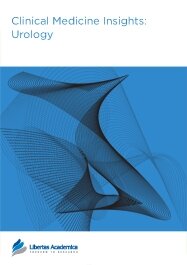

Publication Date: 19 May 2008
Journal: Clinical Medicine Insights: Urology
Citation: Clinical Medicine: Urology 2008:1 15-21

Background: The Kt/V value demonstrates the dose of hemodialysis (HD). However, because of several existing methods for calculating delivered dialysis dose, Kt/V values can, in fact, be different for the same set of pre-/post-dialysis blood urea concentrations.
Methods: In the study presented here, another formula was derived for calculating Kt/V from the pre- and post-dialysis BUN. We prospectively compared the Kt/V values obtained using this new formula and the Kt/V values obtained via the other existing formulae to see whether reliance on the latter approach was likely to lead to errors in over- or underprescribing dialysis regimens. Data were processed on 268 dialysis patients.
Results: The estimated Kt/V (Kt/Vest) values were statistically different (p < 0.05) from the calculated Kt/V values from other models, except for those Kt/V values calculated according to the lowrie (P = 0.112), Keshaviah (P = 0.069), Daugirdas First Generation (P = 0.059), Basile (P = 0.102), Ijely (P = 0.286) and Daugirdas Second Generation (P = 0.709). The best correlations were seen with the Daugirdas second generation formula (R = 0.958 and R2 = 0.919).
Conclusion: Since the best correlations were seen between Kt/Vest and the Daugirdas second generation Kt/V we can demonstrate that these two models are more accurate than the other models.
PDF (308.95 KB PDF FORMAT)
RIS citation (ENDNOTE, REFERENCE MANAGER, PROCITE, REFWORKS)
BibTex citation (BIBDESK, LATEX)


I would like to express my gratitude and say that publishing in LA's journals is one of the best experiences I have had. I will certainly continue with LA's journals in the future. The unique feature of this publisher is that it provides a research platform for all young researchers. Thank you for providing a sustainable publishing environment for us.
Facebook Google+ Twitter
Pinterest Tumblr YouTube